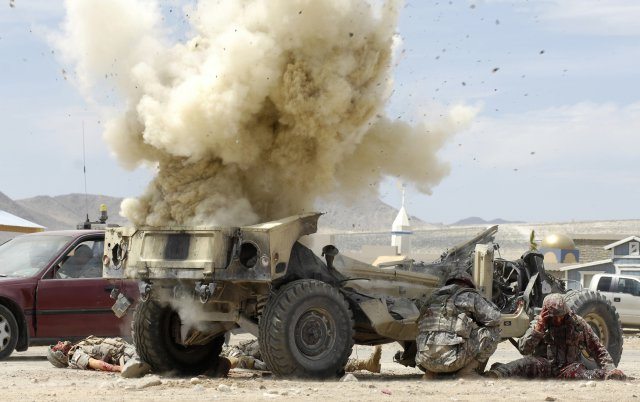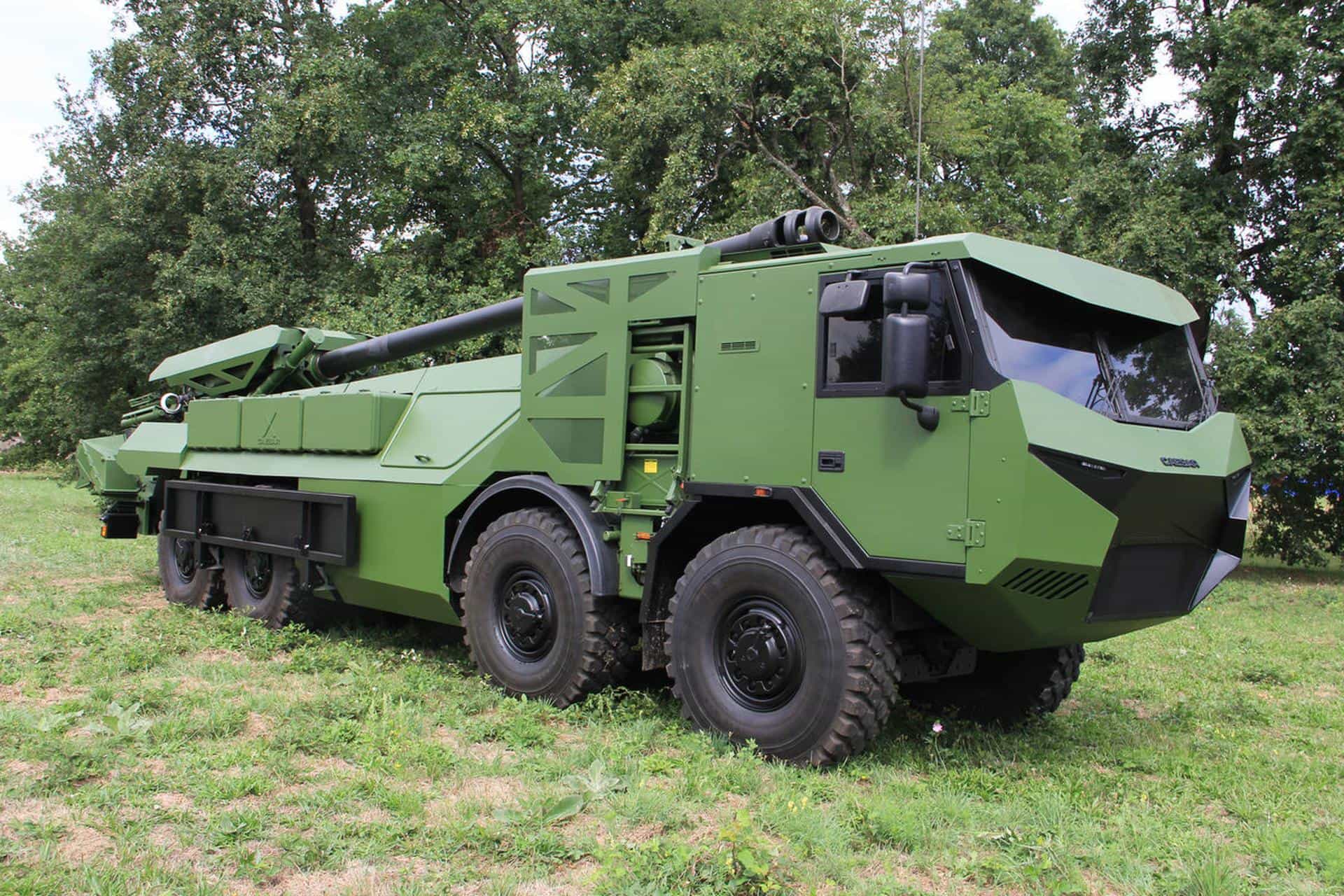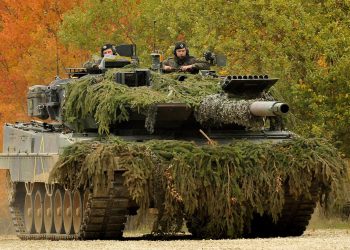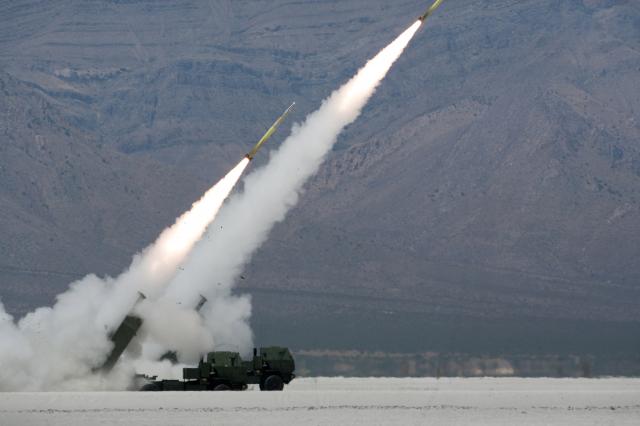The Army Surgeon General’s Office released its report yesterday on dismounted complex blast injuries, which more than twice as many service members have suffered annually since the 2009 troop surge in Afghanistan.
Brig. Gen. Joseph Caravalho Jr., commander of the Army’s Northern Regional Medical Command, detailed the report’s findings to reporters here.
The injury pattern known as DCBI, Caravalho said, is typically caused by a mine or roadside-bomb explosion, affects troops on foot patrol, and involves traumatic amputation of one leg, at least a severe injury to the other leg, and wounds to any or all of the pelvis, abdomen and genitals.
Army Surgeon General Lt. Gen. Eric Schoomaker charted a task force in 2011 to study the injury pattern, Caravalho said. The group, which Caravalho chaired, included experts from the Army, Marine Corps and Veterans Affairs Department, who examined the causes, prevention, protection, treatment and long-term care options for service members suffering these severe injuries, he added.
“These are life-defining injuries for these warriors and their families, but it is not desperate,” Caravalho said. “All of us in uniform understand it’s not just about saving lives; it’s about doing everything military medicine can do to help them lead full and productive lives.”
The report details the number of surviving service member amputees from January 2010 to March 2011. Of 194 amputations, 78 resulted from DCBI and 116 from other causes. By service, 53 Marines, 23 Soldiers and two Sailors suffered dismounted complex blast injuries resulting in amputation.
Caravalho said while severe injuries nearly doubled from 2009 to 2010, military medicine is saving more lives than ever before.
More combat troops are surviving, he said, because personal protective equipment and armored combat vehicles have decreased the number of head, torso and serious burn injuries; battlefield medics focus first on controlling bleeding with tourniquets; helicopter evacuation times are shorter; there are highly trained medical professionals aboard those helicopters; and medical surgeons have improved surgical resuscitation.
The task force identified 92 recommendations to improve quality of care to service members suffering lower body blast injuries and their families, Caravalho said.
Some best practices have already been implemented, he added: paramedic training for flight medics, to improve the level of care available during medevac; and early use of blood products, possibly even on the battlefield. Other recommendations focus on point-of-injury and long-term pain management, and on a multidisciplinary approach to long-term care, he said.
Col. James Ficke, chairman of the orthopedic surgery and rehabilitation department at Brooke Army Medical Center near San Antonio, told reporters he has worked with many service members who have suffered complex blast injuries.
One, a West Point graduate of less than a year, lost three limbs, Ficke said.
“He’s married. He has a brand-new baby,” Ficke said. “He went through a grieving process, as we can only imagine — it would be hubris to say we understand what they’ve gone through. But for him to go through that grieving process, and then recover, and be in a wheelchair the rest of his life, but see that child grow up — he has said, ‘I’m glad I’m alive.'”
Service members who suffer these injuries can still live fruitful and productive lives, but need help to deal with fear of the unknown, he said.
“We have mentoring, we have individuals that have gone through something like this and are able to coach, and tell someone who’s just starting that process: ‘This is what it’s like. I’ve been there; I know,'” Ficke said.
Caravalho said research continues into “blast boxers,” armored underwear that may help prevent some genital and femoral artery injuries.
Col. Jonathan Jaffin, chief of staff for the Army Surgeon General Office’s Complex Battle Injury Work Group, said the military medical research community also is researching how to compress blood vessels “that otherwise you couldn’t get a tourniquet on.”
Ficke added, “If we can stop bleeding, we can keep people alive. That’s why we’ve seen such success in survival in this war, with severe injuries.”
The next challenge is to achieve similar success with genital injuries, he added.
“We have reconstructive urologists in the combat support hospitals, deployed, so that if there is a testicular or genital injury that is salvageable, that surgeon can do something far forward,” Ficke said.
The long-term prognosis for people who have had a leg amputated is best if doctors can preserve the other leg, even if it’s damaged, Ficke said.
“If we have technology that can improve that ability to walk — it, long-term — gives them a better health outcome for heart disease, diabetes, all of those things,” he said. “We are now working with an exciting device that enables someone to use a limb that has had a devastating injury and can still run.”
Military medical teams use a multidisciplinary approach to complex blast injuries, incorporating surgeons, therapists, prosthetics and behavioral medicine experts to give patients the best possible long-term outcome, Ficke said.
Caravalho said military medical professionals want service members to know there always is hope, even after complex traumatic injuries.
“Military medicine and the VA will be with them for the long term,” he said. “They are entitled to the absolute best care we can provide — not because of their injuries, but because of their service.”











